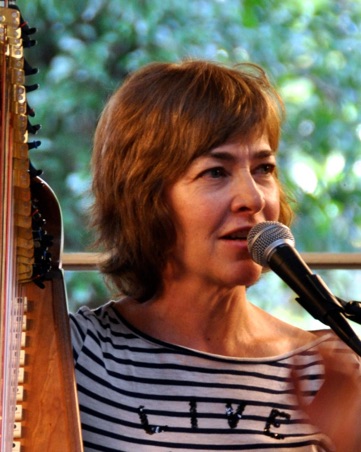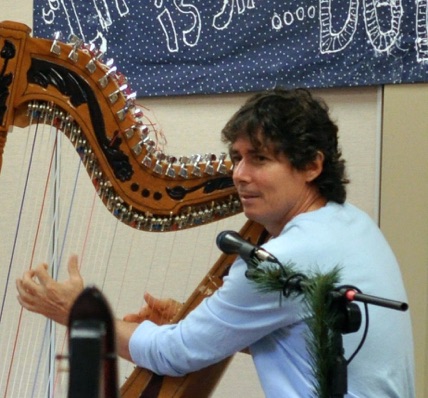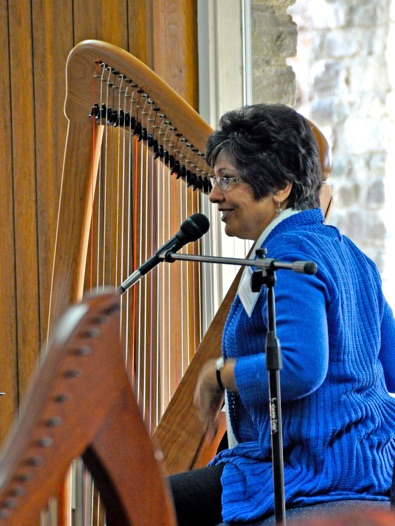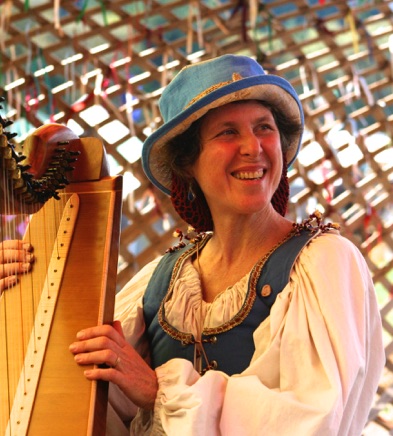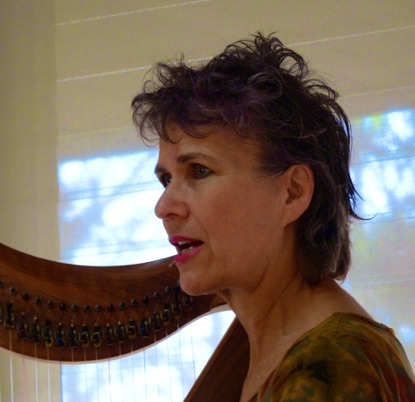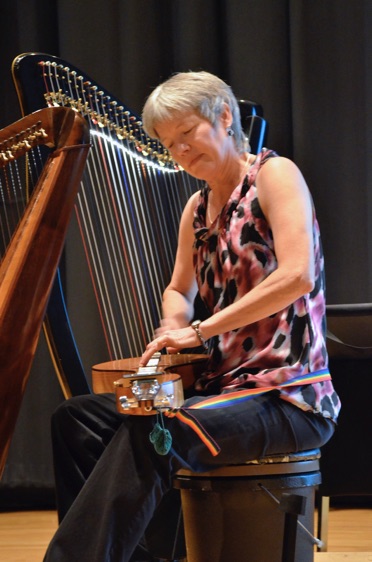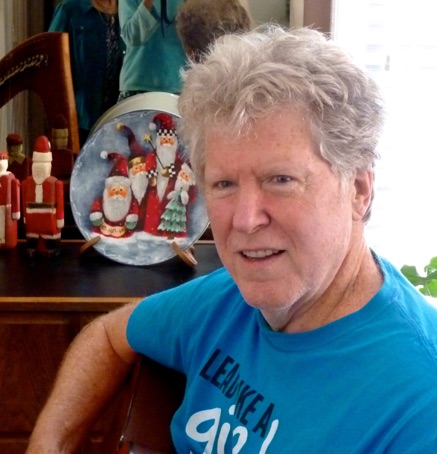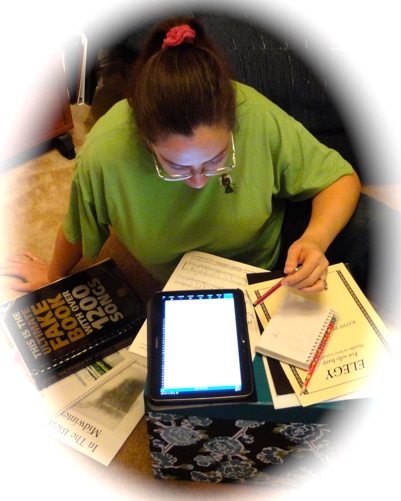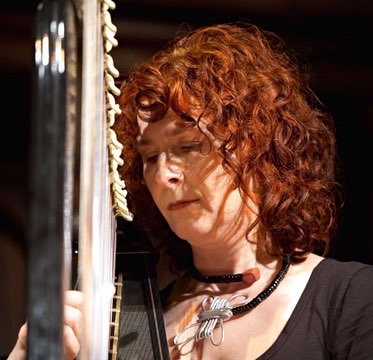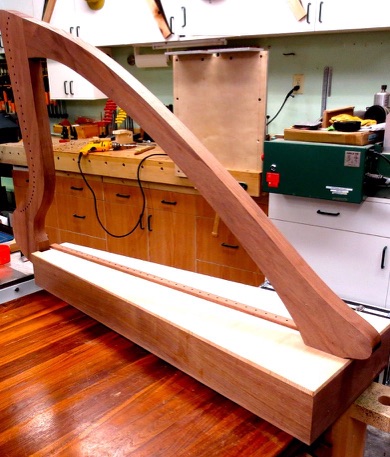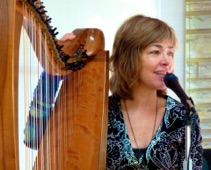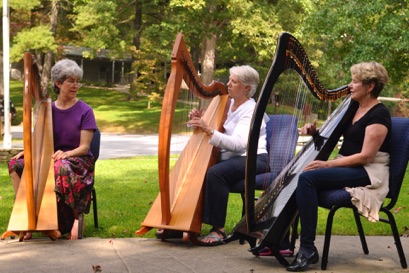Ear Magic
How would you like to be able to hear a melody, then sit at the harp and pick it out it with accuracy? In this workshop, you’ll learn to hear sounds numerically and translate those into your fingers at the harp.
Ray makes this a secure and accessible learning experience for all; you will “sight-sing” melodies you already know, in incremental stages. They are tunes of three, five, six, eight notes and carefully planned for “melodic development” as they expand in range. You will learn his specific method for taking it to new levels.
The feeling of empowerment comes when you hear a melody (or hear it in your head) and can get it to come out of your fingers with accuracy. This takes time to learn at home after the workshop, and is exciting while you develop. You’ll take home specific step-by-step tools, and the vendor hall has a book by Ray to help you further the effect of this training.
Companions are welcome to come with their own instrument. All exercises will be in C major, so no need for levers. No music reading skills needed. Bring Harp. All levels.
________________
Instant Accompaniment
Simple left hand chording with
“Enhanced Lead Sheets”
In this hands-on workshop, you will learn simple left hand chording. You’ll play with a Fake Book (melody-line-only-notation) that includes Ray’s method of “Enhanced Lead Sheets.” This new method solves the question of how to provide an accompaniment. You can apply it to hymns, spirituals, Christmas, pop tunes, folk tunes, lullabies and any other repertoire.
It’s nice when a course can continue once you get home, and Ray’s Anthology book is a rich resource for the things you learn in this course. This book is used by several harp therapy trainings. During your workshop, nearly all tunes will be in C major. Only about 10 minutes are tunes in G major, so harps with no levers are fine for most of the class. Bring harp. Experienced Beginners to Early Intermediate.
________________
Lush Hymns
Want to get a big, full sound out of your harp to make hymns movingly rich? In this course, Ray masterfully teaches you to create six-note harmonies combining 3-note chords in both left and right hands.
Instead of a thin single-note melody line in the right hand and arpeggios in the left hand, you will be creating a full chordal sound on every single note. You can do this using just a lead sheet (melody line notation), so you’ll have a huge “almost-instant” repertoire once you get this down pat.
Ray has a brilliant book “Hymns and Harmony” with lead sheets of 100 hymns from 6 denominations, from simple to advanced with increased level of complexity clearly indicated in the book. We’ll have it in the vendor hall. If you have fake books of hymns or any other genres of music at home, you can use what you learn in this course with those, too.
If you already use lush six-note chords this way, you may not need this class. But for the rest of us: Learn how to inspire listeners with a rich rendition of any hymn or other tune! Bring Harp. Early Intermediate to Advanced.
________________
Fun Chord Theory for Beginners
Beginners, a chord is only three notes, but it is the foundation of what makes harp music beautiful! Those 3 notes can be in any order, and each pattern makes a new “voicing” which evokes a unique harmonious sound.
Come let Ray Pool take you on a user-friendly exploration of the major scale and chords. You’ll learn about building harmony with the left hand, and creating gorgeous sounds with “inversions.” You can play with one hand in this workshop if you aren’t ready for both hands. No levers needed. Recording this workshop will help you refresh your learning as you grow in your abilities. Bring harp. Newbies and Early Beginners.
________________
3’s A Chord!
Simplify playing the harp and “make sense” of your music! Ray will lead you in a user-friendly journey of major and minor triads, diminished chords, the major scale and chromatic scale and intervals, and all inversions. If that sounds overwhelming, don't worry. Ray uses analogies from everyday life to make the knowledge "stick." All you need to attend this course is to be able to read lines and spaces.
You’ll understand your tunes so much more clearly when you know what the roles are for the Tonic, Sub-dominant, and Dominant chords, too.
Experienced beginners to Early Intermediate players- this is a bedrock class for you. Or for those of us who play the harp well technically but have holes in our knowledge of chord theory, this is for us too.
The “world record” for people gleefully repeating this popular course is a woman who plays very well and has been eagerly sitting in the front row 6 different years. She says she gets some new revelation every time. So, as Ray says, “Repeat offenders welcome!”
Bring harp. Experienced Beginner to Early Intermediate, or anyone of any playing ability who wants to fill in the gaps in their knowledge of chord theory.
________________
Harmony Building
Ahh, the beauty of sevenths! They evoke a feeling unlike any other harmony chords… relaxed, rich, expensive, timeless, snazzy, inspiring, and soothing at the same time. In this course, Ray will teach you to build four note chords, “seventh chords,” on each note of the scale, using the root position and inversions of the seventh chord. This continues into a discussion of chord tones of the 9th, 11th and 13th.
Wait until you use your new knowledge to play Danny Boy this way… oh, oh, ohhhh! And Shenandoah… you can make these really luscious… and so, so, so many other tunes.
Ray's Clever Levers book is an adjunct to this course (I always thought that book was about using levers, but it’s about harmony-building on lever harps).
For this course, you need to know enough notation-reading to read a melody line (lead sheet). Bring a harp with levers for the full hands-on experience, but if you flew to the conference and rented a non-levered harp tuned in C will still get a lot out of this workshop and can apply the rest when you get home. Bring harp.
Experienced Intermediate to Advanced.
Ray is also teaching an all-day class Thursday October 22

